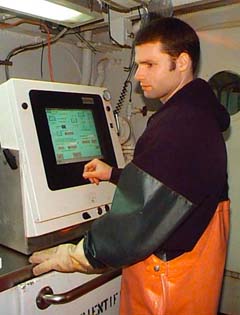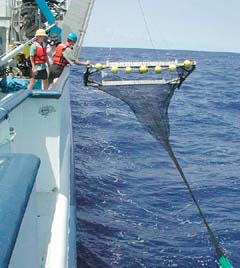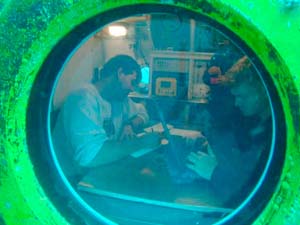Advanced Scuba diving
The NOAA Diving Program and NURP Centers support more than 25,000 dives per year. Under the Outer Continental Shelf Lands Act, NOAA has the mandate to address the needs of scientific divers through advanced diving technologies.

Extending the current depth limit and bottom time per dive will considerably increase the undersea areas where self-contained wet-diving scientists can make firsthand observations, take fine measurements, and conduct experiments. This new capability will support NOAA's mission in the areas of fisheries management, habitat restoration, National Marine Sanctuaries, ocean exploration, deep sea corals, and marine biotechnology. To increase the depth limit and bottom time of NOAA scientific dives NURP is working in conjunction with the NOAA Diving Program to implement the following measures:
Adopt Techniques that will Extend The Safe Diving Depth of NOAA Dives from The Current 130 Feet to 300 Feet

Several scientific diving programs operated by NURP's university partners have successfully used innovative deep diving techniques, most notably in conjunction with NOAA's scientific oversight of the recovery of the USS Monitor shipwreck. Based on this success, NURP is working with the NOAA Diving Program and the AAUS (American Academy of Underwater Sciences) to establish advanced diving procedures for NOAA for scientific dives to 300 feet.
Introduce Closed Circuit Mixed Gas Rebreathers (CCRs) into NOAA Dive Programs
Standard SCUBA operates as an open circuit system where the diver's breath is exhaled into the water. Closed circuit breathing utilizes apparatus that recycles the diver's exhaled breath, removes the carbon dioxide, and replaces the consumed oxygen. This reduces the amount of gas that must be carried by the diver and increases dive time. A NOAA sponsored working group has generated a safety standard, Minimum Manufacturing and Performance Requirements for CCRs. Using the safety standard, CCRs that meet the requirements will be approved for use on NOAA sponsored dives. In addition to the above measures, National Undersea Research Program is also working to:
Facilitate The Formation of The Hawaii Advanced Diving Consortium (HADC)

The HADC will provide a regional multi-agency advanced diving forum where members may share expertise and equipment to support advanced scientific diving operations. Proposed participants include NOAA (NURP's Hawaii Undersea Research Laboratory, the NOAA Diving Program, Office of Ocean Exploration, National Marine Fisheries Service, and the National Marine Sanctuaries Program), the University of Hawaii, the Bishop Museum, and possibly, the U.S. Navy and the U.S. Coast Guard.
Develop a Next Generation Undersea Laboratory system
The NURP-sponsored underwater laboratory AQUARIUS, deployed at a depth of 60 feet in the Florida Keys, has advanced NOAA's capability to conduct strategic shallow coral research. Part of NOAA's long term scientific and, potentially, economic vision is to work towards developing the ability for humans to live and work under the sea, to the edge of the continental shelf (to depths up to 3000 ft). NURP is facilitating the formation of the next generation of undersea laboratories, which will be mobile, increase bottom time for a greater number of scientists over a larger geographical area, and have enhanced underwater depth capability. To do this will require the development of a combination of tools and techniques that enable humans to interact productively with the deep-sea environment from remote locations, as well as, from on site. Some of the tools could potentially include submersibles that allow divers to lock out at depth, habitat (s) or undersea laboratories where humans live and work for extended periods at depth, and remotely operated vehicles, to be used in combination with these facilities.
 Deep Sea Crabs
Deep Sea Crabs